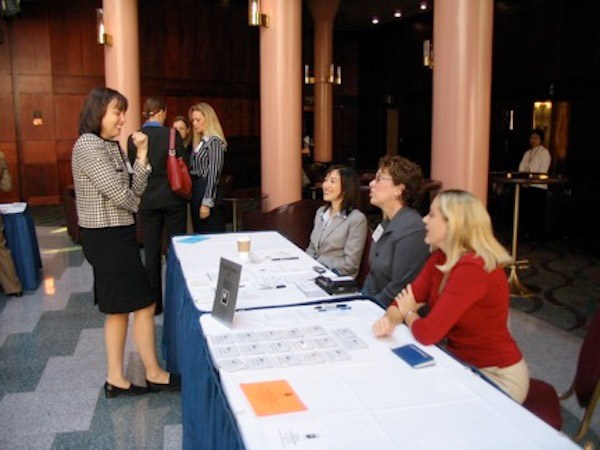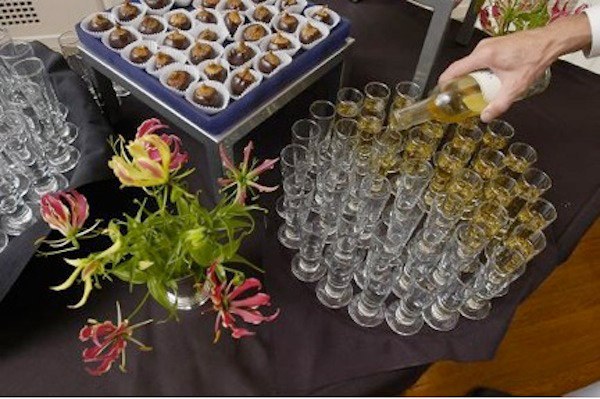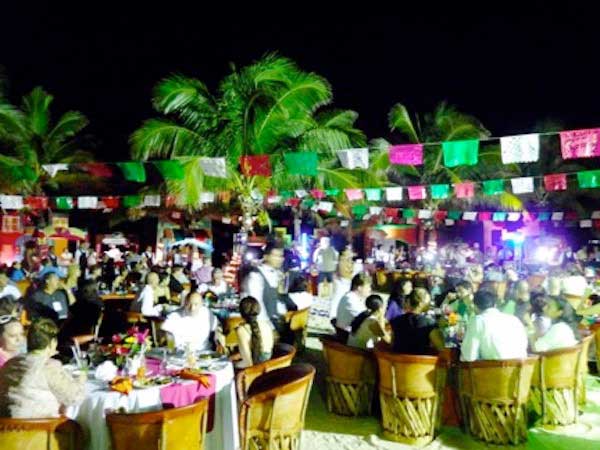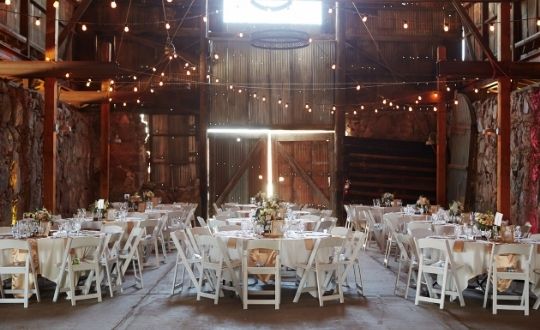When you plan a corporate event that is intended to thank your client’s customers or show appreciation to business association members, keep these simple tips in mind.
1. Make check-in a breeze.
Print nametags and create goody bags for your “yes” and your “maybe” RSVPs. In the corporate world, attendees show up at the last minute all the time, and there’s not much we can do about it. But there’s nothing more embarrassing than looking like you weren’t prepared for them.

Remember that this is a thank you for your client’s best customers, so there’s no use whining about someone who suddenly shows up. You must build the additional cost into the event budget. Be ready, and have all the nametags printed for guests who RSVP’d yes as well as those who have not RSVP’d at all. This way, if someone does show up, you are prepared and not scrambling around for their credentials, nametag or client gift. You can safely not make nametags and gifts for those who RSVP’d no.
2. Keep food simple.
This goes for all business and corporate special events. It’s awkward enough to have to eat with business associates, where first impressions and physical appearances are all we have to go on. Don’t let the awkwardness extend to potential embarrassment over the food.
Avoid messy finger foods such as chicken wings or BBQ ribs. (I can’t tell you how many business events I have been to where hot wings have been served. I love them, but I’d rather make a mess of myself at home rather than in front of my vendor partners or VIP clients.) Business event finger food shouldn't require more than a cocktail napkin and shouldn't drip, drop crumbs, or be difficult to chew.

Safe hors d’oeuvres are one-bite finger foods like stuffed olives, tiny crab cakes, chicken skewers with (again with one bite), tiny meatballs without too much sauce, gougéres, mini quiche and mini spanakopita — the key words here are one bite, and mini.
Safe plated meals are things like de-boned meats with sides that people can eat simply with a fork and knife. Don’t offer chicken or other meats containing bones, or shrimp with shells.
In addition, avoid food stations with lots of time-consuming choices for meals, such as pasta sauté stations, as they tend to build up a line. However, these are fine for smaller events on a flow basis, or for the mingle hour prior to a full dinner.
3. Make drinks easy and quick as well.
About 10 minutes before the event opens, have your bartenders pre-pour servings of beer and wine for approximately a quarter of your guests. If you have the manpower to do it, instruct wait staff to serve the drinks on trays as guests arrive. This keeps your clients away from the bar unless they absolutely need a cocktail or something besides beer and wine, and it prevents a line from forming.

When clients treat their customers to a thank you event, there’s nothing worse than inviting them out then making them wait in line.
4. Be a great planner — educate your client (the event host) on how to work the room and create connections.
Often, businesspeople assume that just because they throw an expensive party and invite their best clients, it will automatically translate into connections and goodwill for their business. This is not the case.

Help your event client get the most return on their investment by offering ideas on networking, ice breakers, superb entertainment, and beautiful pre- and post-event communications, (whether electronic or printed) so that the event they plan with you is the most successful appreciation party ever. Impress upon your host the importance of creating a memorable experience — then help them to do that. Your corporate event client will want to hire you again and again once they see how their business has blossomed because of your assistance.
5. Finally, connect all the attendees.
Create a sense of community online and offline by offering attendees ways to connect after the event, such as by sharing photos on Instagram with hashtags, creating a public discussion board, or joining a Facebook group targeted at users of your event client’s product or service.
When attendees get a lot of networking and personal connections out of an event, the reminiscence and goodwill from the event is associated with the host who invited them.
Ultimately, enrolling in Event Planning Courses can help you gain the education and experience you need to start an exciting new career as an Event Planner.
Bonus: Want to learn how to become an event planner? Enroll in the New York Institute of Art and Design’s Event Planning Course today! Get started for as little as $39!





